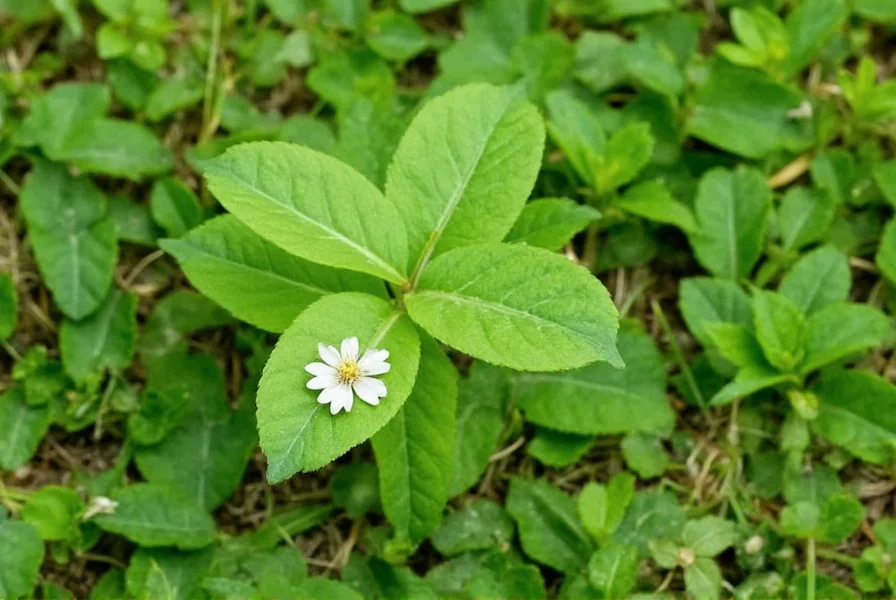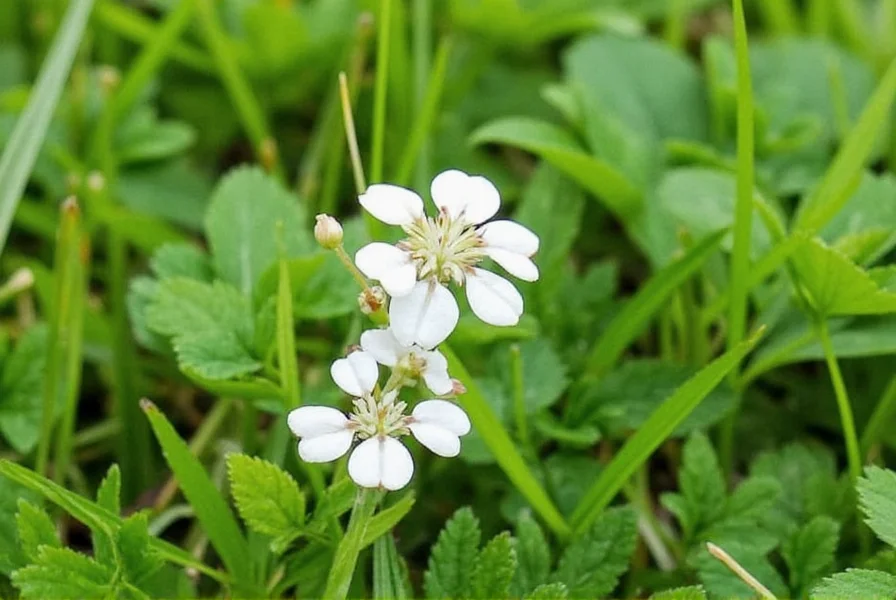Understanding white clover begins with recognizing its distinctive characteristics. This resilient plant features creeping stems that root at nodes, creating dense mats that withstand foot traffic. Each leaf consists of three oval-shaped leaflets with a crescent-shaped watermark, and flowers form spherical clusters that attract bees and other beneficial insects. White clover thrives in USDA hardiness zones 3-10, preferring full sun to partial shade and adapting to various soil types, though it particularly flourishes in nitrogen-poor conditions where grass struggles.

Ecological Benefits of White Clover
White clover's most significant advantage lies in its nitrogen-fixing capability. Through a symbiotic relationship with rhizobia bacteria in root nodules, it converts atmospheric nitrogen into a plant-available form, reducing or eliminating the need for synthetic fertilizers. This natural process improves soil fertility for surrounding plants while preventing nitrogen runoff that contaminates waterways. Research from the University of Minnesota Extension confirms that white clover can fix 50-150 pounds of nitrogen per acre annually, substantially benefiting ecosystem health.
As a pollinator powerhouse, white clover provides essential nectar and pollen sources throughout its long blooming season from spring to fall. Unlike many flowering plants that bloom briefly, white clover offers consistent food for honeybees, native bees, and other beneficial insects. The Xerces Society notes that white clover supports over 70 species of pollinators, making it valuable for biodiversity conservation in urban and suburban landscapes.
White Clover in Lawn Management
The debate over whether white clover belongs in lawns has shifted dramatically in recent years. Traditional lawn care often targets white clover as a weed, but sustainable landscaping practices increasingly embrace it as a desirable component. Homeowners seeking low-maintenance, eco-friendly alternatives to conventional turf grass find white clover offers several advantages:
| Traditional Grass Lawn | White Clover Lawn |
|---|---|
| Requires regular fertilization | Naturally enriches soil through nitrogen fixation |
| Needs frequent watering | Drought-tolerant with deep root system |
| Vulnerable to compaction | Withstands moderate foot traffic |
| Attracts few pollinators | Supports diverse pollinator populations |
| Requires frequent mowing | Grows only 4-8 inches tall |
Many homeowners now intentionally incorporate white clover into lawn mixes or transition entirely to clover lawns. Microclover (a dwarf variety) has gained particular popularity for its lower growth habit and reduced flowering, addressing concerns about the plant's traditional tendency to create uneven lawn surfaces.
Identification and Differentiation
Accurate identification prevents confusion with similar plants. White clover features:
- Trifoliate leaves with a distinctive pale crescent marking
- Flower heads containing 20-50 individual florets
- Creeping growth habit with stems that root at nodes
- Height typically 4-8 inches, though flowering stems may reach 12 inches
How to identify white clover vs other common look-alikes:
- Dutch white clover (Trifolium repens var. Pipolina): Smaller leaves and flowers, grows lower to the ground
- Red clover (Trifolium pratense): Taller plant with pinkish-purple flowers and hairy stems
- Black medic (Medicago lupulina): Similar yellow flowers but produces black seed pods and lacks the leaf watermark
- Henbit (Lamium amplexicaule): Square stems, purple flowers, and leaves without the characteristic watermark
Managing White Clover: To Keep or Remove
Whether to encourage or control white clover depends on your landscaping goals. For those embracing sustainable practices, white clover requires minimal maintenance:
- Mow less frequently (every 3-4 weeks) or not at all
- Avoid nitrogen fertilizers that favor grass over clover
- Water deeply but infrequently to encourage deep root growth
- Overseed thin areas in early spring or fall
For traditional lawn enthusiasts seeking how to control white clover in grass lawn, consider these organic approaches:
- Improve soil fertility with appropriate nitrogen levels (0.5-1 lb per 1,000 sq ft monthly during growing season)
- Overseed with competitive grass varieties like turf-type tall fescue
- Hand-pull small infestations, ensuring complete root removal
- Maintain proper mowing height (2.5-3.5 inches) to shade out clover
- Apply corn gluten meal in early spring as a natural pre-emergent
Chemical control remains an option but contradicts the ecological benefits that make white clover valuable. Selective broadleaf herbicides containing 2,4-D, MCPP, or dicamba can eliminate white clover but may harm other desirable plants and pollinators.
Practical Uses Beyond Lawns
White clover serves multiple purposes in sustainable landscapes. Gardeners use it as a living mulch between vegetable rows, where it suppresses weeds while enriching soil. Farmers incorporate it into pasture mixes for livestock, though caution is needed as excessive consumption can cause bloat in ruminants. The edible properties of white clover make its flowers and young leaves suitable for salads, teas, and even as a natural sweetener when boiled down.
Contrary to common misconceptions, white clover doesn't typically invade established garden beds with healthy soil. Its presence often indicates compacted soil or low nitrogen levels in lawns, serving as a natural indicator of soil conditions needing attention. Understanding these white clover nitrogen fixation benefits helps gardeners work with rather than against this resilient plant.
Addressing Common Concerns
Many homeowners worry about white clover attracting bees near play areas. While white clover does attract pollinators, the risk of stings remains minimal as bees visiting clover are typically focused on nectar collection and not defensive. Mowing before peak bloom time significantly reduces flowering and subsequent bee activity. For those with severe allergies, maintaining a mowed border around play areas provides adequate protection while preserving ecological benefits elsewhere in the landscape.
The notion that white clover creates an uneven lawn surface has been largely addressed through modern cultivars like microclover. These improved varieties grow more uniformly and require less frequent mowing than traditional white clover, making them increasingly popular for homeowners seeking the benefits without the aesthetic drawbacks.
Conclusion
White clover represents a shifting paradigm in lawn management, moving from eradication to intentional incorporation. Its ability to improve soil health, support biodiversity, and reduce maintenance makes it a valuable component of sustainable landscapes. Whether you choose to embrace white clover as a lawn alternative or manage it within a traditional grass setting, understanding its characteristics and ecological role leads to more informed decisions. As research continues to highlight the environmental costs of conventional turf grass, white clover's role in creating resilient, low-input landscapes becomes increasingly significant for environmentally conscious homeowners.
Frequently Asked Questions
Is white clover safe for pets?
White clover is generally safe for pets in moderation. While excessive consumption might cause mild digestive upset in some animals, it's not toxic. However, avoid chemical treatments if pets frequent areas with white clover, as herbicides pose greater risks than the plant itself.
Does white clover come back every year?
Yes, white clover is a perennial plant that returns each year from its root system. It spreads through creeping stems that root at nodes and through seed production. In colder climates, it may die back during winter but regrows from roots when temperatures warm in spring.
Can I plant white clover over existing grass?
Yes, you can overseed existing grass with white clover. Prepare the area by mowing low, removing thatch, and lightly raking to ensure seed-to-soil contact. The ideal planting time is early spring or fall when soil moisture and temperatures favor germination. Microclover varieties integrate particularly well with existing turf grass.
How does white clover affect soil pH?
White clover prefers slightly acidic to neutral soil (pH 6.0-7.0) but tolerates a range from 5.5-8.0. Unlike some plants that significantly alter soil chemistry, white clover primarily affects soil nitrogen levels through fixation rather than pH changes. Maintaining proper soil pH through lime or sulfur applications remains important for overall lawn health.
Why does white clover bloom more in some areas than others?
White clover flowering intensity varies based on soil fertility, mowing frequency, and sunlight. Clover blooms more profusely in nitrogen-poor soils where it has a competitive advantage over grass. Frequent mowing reduces flowering, while areas with less foot traffic and more sunlight typically produce more blooms, attracting greater pollinator activity.











 浙公网安备
33010002000092号
浙公网安备
33010002000092号 浙B2-20120091-4
浙B2-20120091-4